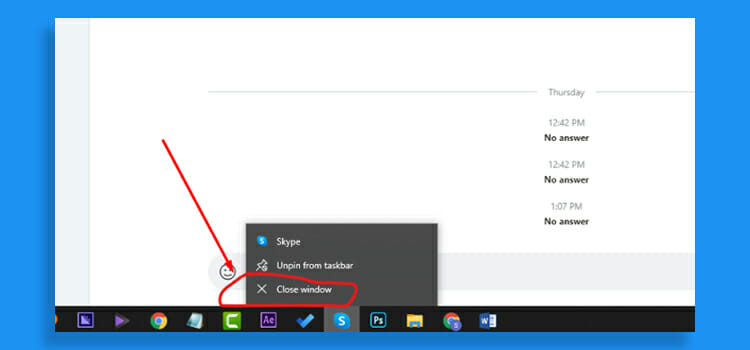How To Reduce Paper Usage And Improve Organisation In The Workplace
Paper waste is a major issue for many businesses, as it is one of the most persistent operational costs in the modern office. However, this problem is also preventable since there are more ways than ever to share information and store data without paper. Although printing a document instead of using an electronic format may seem easier to many employees, this does not always translate to productivity and efficiency in the workplace. Therefore, making certain changes to help reduce paper usage can have a massive impact both on the environment and the organization in your office. Below you will find some of the best strategies you can use to move to a digital workflow for your data.

Assess Paper Usage And Printing Habits
Employees often use printers for business and personal needs as well. This is why understanding printing habits is one of the most important steps managers should take. Find out if employees print too many personal documents, unnecessary web pages, or single-line emails. Additionally, departments must evaluate their needs carefully before they order bulk print copies of materials, such as brochures and annual reports. Most of the time, there are many un-used copies, which end up in storage rooms, taking up space. It may also be useful to create systems that measure the number of print copies each staff member is responsible for.
Utilise Document Management Software
Implementing HR document management software is a great way to issue and track all your HR documents in one centralized place. As a result, this can reduce your admin workload, remove HR paperwork, and improve visibility into employee data. For example, myhrtoolkit can provide you with the best HR document management software, which will simplify day-to-day operations. You will be able to upload various documents including job descriptions, staff handbooks, policies, and procedures. All of your documents will be securely stored, which will help you maintain compliance and keep your system up to date.
Introduce A Print Policy
If you want to reduce paper usage reliably and consistently, you will need to communicate your expectations clearly. Developing a print policy can help you lay out ground rules around printing in the workplace. It is important to state how employees can save paper, explain what type of printing is appropriate for each document, and which documents can be printed. For example, you may want to forbid printing emails and only allow color printing for customer documents. These guidelines will help your employees stay focused and committed to reducing paper waste.
Create Automatic Electronic Backups
Many employees, managers, and even executives often print their own backups of important documents. While losing documents is certainly a frustrating and stressful process, this usually means that employees don’t trust the company’s document management process. Therefore, it is important to deploy a robust system with disaster recovery and document version control. This way you will ensure document security, which is critical for organizations of all sizes. As a result, employees will learn to rely on the company’s document management system instead of printing their own documents.
Use Paper More Efficiently
Whenever you need to print a document, be sure to print it on both sides of the paper to reduce waste. This can be a reliable method to reduce office printing costs and enhance the organization in the workplace. It may also be useful to change your computer settings so that you can reduce margin and fit more text on each page. Therefore, you will need to prioritize purchasing quality copiers and printers, which can make double-sided copies. You may want to consider buying recycled paper, made from pre-recycled paper materials, as this can cut down on paper production. Remember to provide clearly labeled recycling bins next to copiers, as well as in staff areas.
Switch To Digital Forms
Whether you want to send customer satisfaction surveys or request information about task progress, switching to digital forms will be more convenient. This is a cost-effective solution, which will allow you to record responses automatically. There are also many benefits to consider that paper forms do not offer. For example, you can integrate GPS location, use photos, or add a signature. In addition, every time you want to modify the form, you can easily remove a paragraph, integrate a drop-down menu, or change any other feature at no extra cost.
When it comes to HR operations switching to digital forms is a game changer. For example, Sense HR, a UK HR management software provides a module to create customized templates for various HR forms such as employee onboarding, leave requests, performance evaluations, and more. By using digital forms, HR departments can streamline their processes, reduce paperwork, and improve efficiency.
One of the key advantages of digital forms in HR operations is the ability to automate workflows. With digital forms, HR managers can set up automated notifications and reminders for tasks related to form submissions. This ensures that the necessary approvals and reviews are completed in a timely manner, eliminating delays and improving productivity.
Use Electronic Means To Communicate
Thanks to today’s technology, there are many opportunities for businesses to work with far less paper. Nowadays, instructions, updates, and notices can be sent via workplace communication tools and platforms. You no longer need to use sticky notes and notepads to take notes and appointments. Instead, it is recommended to implement digital calendars and other tools to optimize communication between your team. By allowing easy access to documents from anywhere, employees can receive real-time notifications. Also, emails and text messages can be used to send information more quickly and they are more likely to be remembered than paper notes.
Subscribe to our newsletter
& plug into
the world of technology





